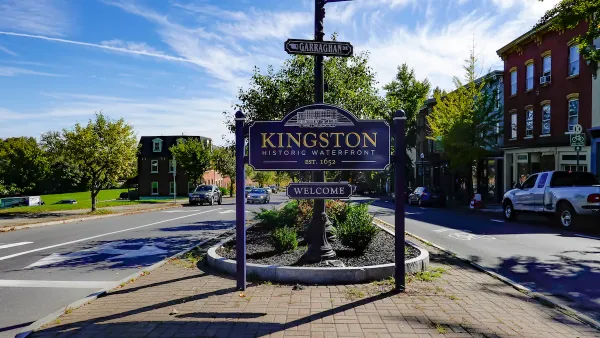The story of East Palo Alto’s incorporation is one marked by great contention among local stakeholders, but also provides valuable lessons for organizers in forging and mobilizing local coalitions.

When East Palo Alto incorporated in 1983, it gained a place among the early cities that were predominantly home to people of color in California and, alongside Richmond, was one of only two with a Black majority. Within a year after incorporation, East Palo Alto joined Berkeley, Santa Monica, and Hayward in an early wave of California cities to pass comprehensive rent stabilization ordinances.
East Palo Alto’s incorporation thus stood at the intersection of two major social movements: the struggles for Black liberation and for economic justice. The channeling of these movements through electoral politics and legal reform required construction of multiracial and cross-class coalitions that rested upon distinct, yet compatible, sets of interests and identities. The story of East Palo Alto’s founding remains relevant today for the lessons it offers about building complex political coalitions that can successfully pursue progressive change in the face of unreceptive institutions and entrenched opposition. These lessons have gained renewed currency during a time when the forces of progress and retrenchment have each intensified and when both tenant rights and racial justice movements are on the rise.
And while rent control was not initially a major focal point of the incorporation campaign, it came to play a central role due to the housing crisis of the early 1980s and also because of its potential for reshaping electoral coalitions at the margin in favor of incorporation amid a tightly contested political landscape.
Communities lacking access to power within the broader society have long gravitated to East Palo Alto. In 1916, Charles Weeks founded Runnymeade Little Farms Colony, a utopian agrarian community that primarily raised poultry. The colony peaked at 1,000 members in the 1920s before ultimately failing. During the 1930s, Japanese and Italian immigrants launched successful flower-growing operations. The substantial Japanese population of East Palo Alto was removed and placed in internment camps during World War II.
East Palo Alto: Historical Background
After the war, East Palo Alto grew rapidly from a population of 1,500 in 1947 to 12,000 in 1953. The newcomers were mostly white and working class. Over the next few years, East Palo Alto lost significant chunks of its area and population to land annexations by Menlo Park and Palo Alto.
A more devastating blow came in ...
FULL STORY: How Rent Control Helped Create East Palo Alto

National Parks Layoffs Will Cause Communities to Lose Billions
Thousands of essential park workers were laid off this week, just before the busy spring break season.

Retro-silient?: America’s First “Eco-burb,” The Woodlands Turns 50
A master-planned community north of Houston offers lessons on green infrastructure and resilient design, but falls short of its founder’s lofty affordability and walkability goals.

Delivering for America Plan Will Downgrade Mail Service in at Least 49.5 Percent of Zip Codes
Republican and Democrat lawmakers criticize the plan for its disproportionate negative impact on rural communities.

Test News Post 1
This is a summary

Test News Headline 46
Test for the image on the front page.

Balancing Bombs and Butterflies: How the National Guard Protects a Rare Species
The National Guard at Fort Indiantown Gap uses GIS technology and land management strategies to balance military training with conservation efforts, ensuring the survival of the rare eastern regal fritillary butterfly.
Urban Design for Planners 1: Software Tools
This six-course series explores essential urban design concepts using open source software and equips planners with the tools they need to participate fully in the urban design process.
Planning for Universal Design
Learn the tools for implementing Universal Design in planning regulations.
EMC Planning Group, Inc.
Planetizen
Planetizen
Mpact (formerly Rail~Volution)
Great Falls Development Authority, Inc.
HUDs Office of Policy Development and Research
NYU Wagner Graduate School of Public Service





























